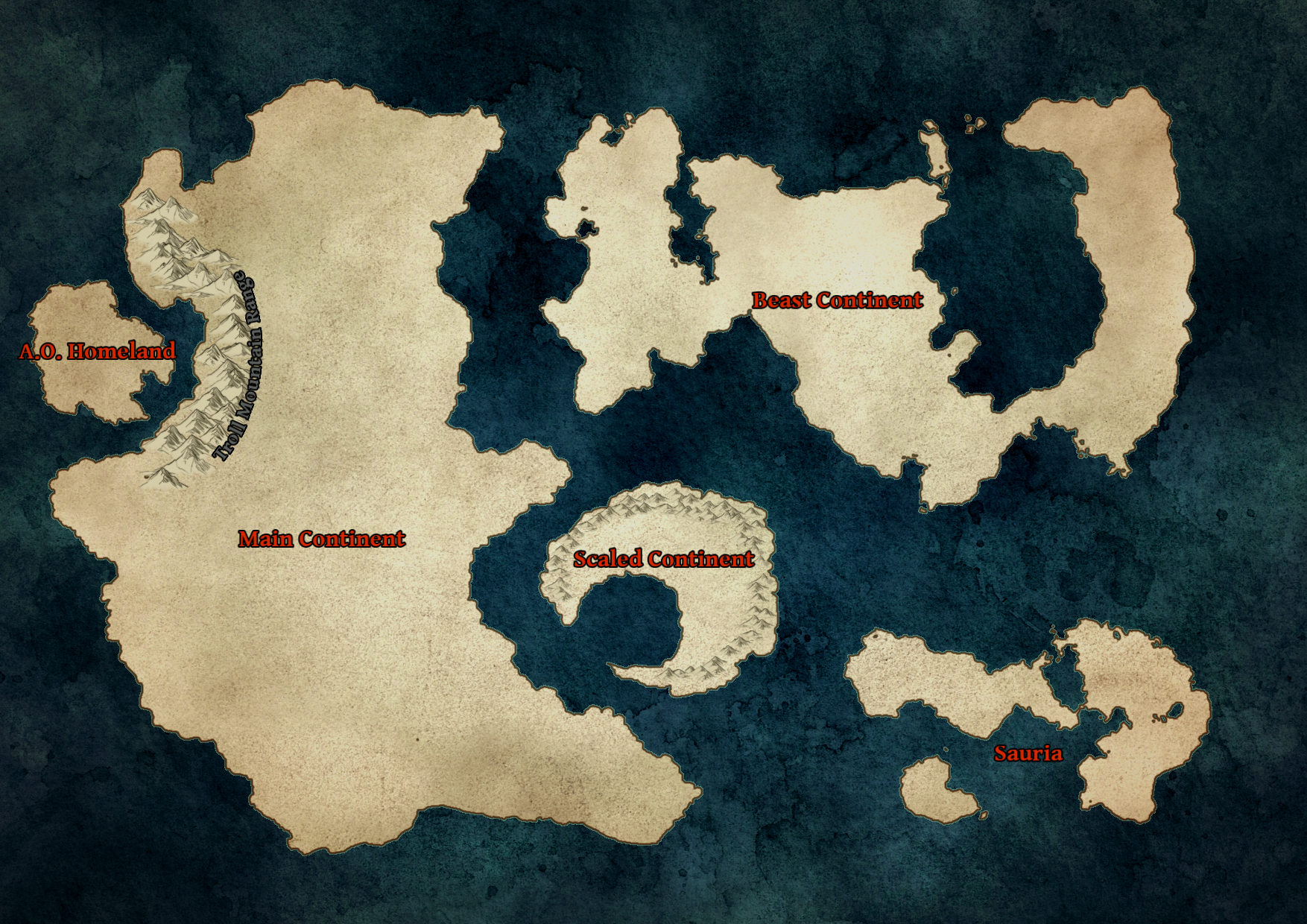Basilisk, General
Basic Information
Anatomy
This squat, multi-limbed draconoid consists of several species. While appearances can vary, all lack wings and have four pairs of limbs. Basilisks usually have a crown shaped crest on their head however the shape and structure varies per species.. Bony spines along their back and thick scales provide protection from potential predators. Their feet are broad and powerful, helping them dig. Up to half of their length consists of their tail.
Biological Traits
There are many legends that say a basilisk is able to petrify people with its gaze. However they actually have a gland in the corner of one of its sets of false eyes that it can shoot neurotoxin from. This neurotoxin is also found in their saliva, making a bite from one of these guys just as dangerous. Getting the neurotoxin in one's eyes or bloodstream can paralyze a victim for quite some time.
Some people tell of their breath being able to wither plants, but this haven't been true.
Genetics and Reproduction
Legends tell of basilisks hatching from eggs laid by snakes and incubated by roosters.
Ecology and Habitats
While Basilisks are found across the world, the majority of the species are found in deserts and volcanic craters, for they they thrive in extreme heat. While they are crepuscular, Basilisks spend most of their time in their burrows. They can burrow relatively quickly and their burrow and tunnels are elaborate.
Dietary Needs and Habits
Basilisks are ambush predators that will prey on just about anything, but typically eats small mammals, birds, and reptiles. They'll wait for prey to approach close enough to shoot neurotoxin from one of it's false eyes into the prey's eyes, and then track it until the toxin takes affect. Their stomach acid is capable of breaking down even bone.
Additional Information
Social Structure
Solitary by nature, basilisks only come together during the breeding season.
Domestication
Basilisks are notoriously difficult to tame.
Uses, Products & Exploitation
There are many legends involving body parts of the basilisk being able to turn something less valuable to something highly valuable. For example some tell of their ashes being able to turn silver to gold, while others tell of using powered basilisk blood, powdered human blood, red copper, and vinegar could be used to make gold. So far none of these have been proven to be true, but this hasn't stopped fortune seekers from trying different combinations.
Perception and Sensory Capabilities
Basilisks have one set of real eyes, multiple sets of 'false eyes'. These false eyes are orifices that can sense vibrations. Their eyesight is terrible so they mainly rely on their ability to sense vibrations through the soil to locate prey.
Symbiotic and Parasitic organisms
Weasels and ferrets are the biggest predators of young and small species of basilisk, for they are immune to the basilisk's venom.
Average Weight
10-300lbs
Average Length
1-12ft
Body Tint, Colouring and Marking
Most species are brightly colored and covered in intricate patterns to warn predators of their toxicity.
Remove these ads. Join the Worldbuilders Guild



Comments